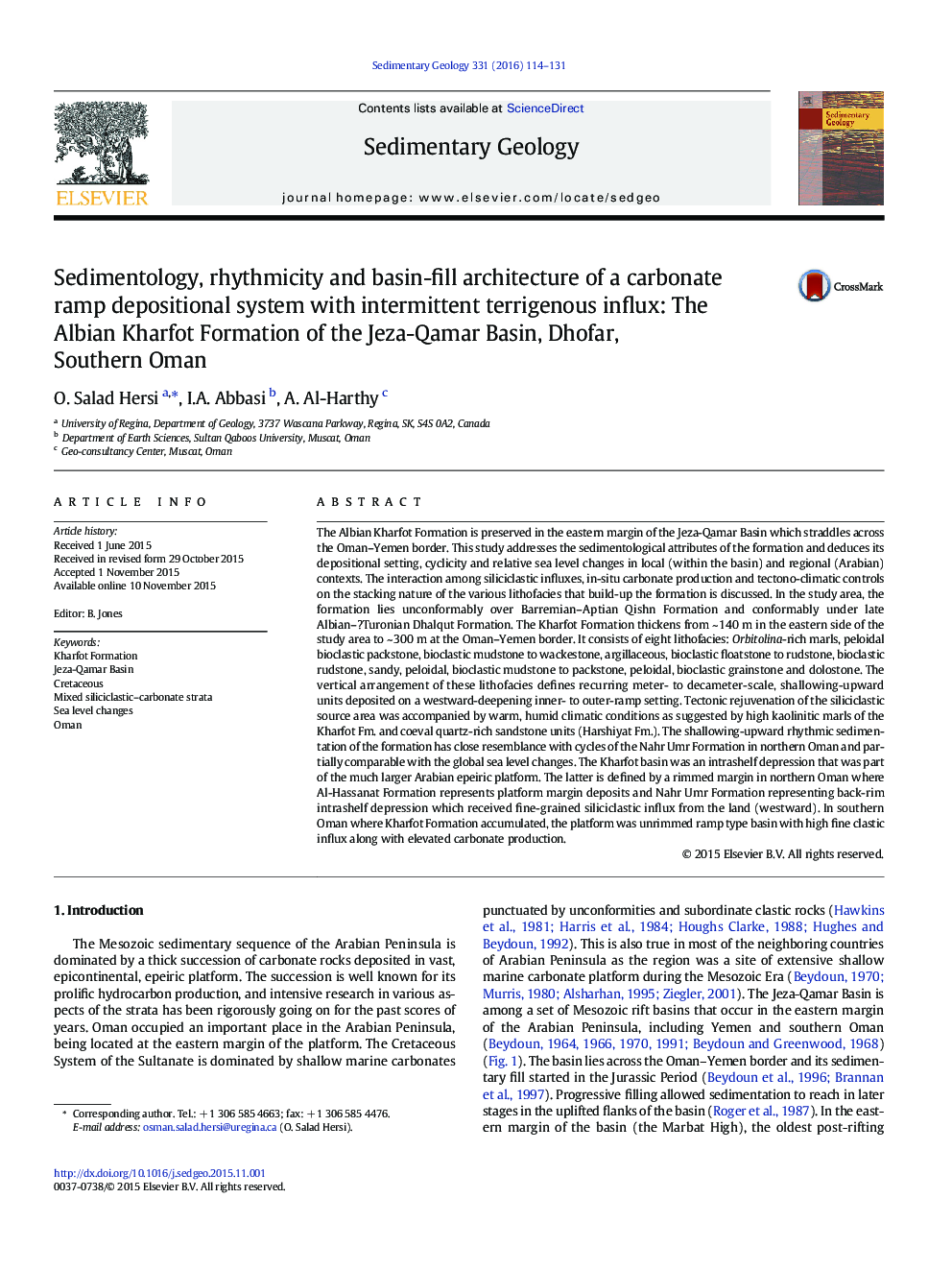| کد مقاله | کد نشریه | سال انتشار | مقاله انگلیسی | نسخه تمام متن |
|---|---|---|---|---|
| 4689139 | 1636032 | 2016 | 18 صفحه PDF | دانلود رایگان |
• Lithofacies and depositional environment of the Albian Kharfot Formation, Oman.
• Concurrent siliciclastic and carbonate deposition within regional (Arabian) context.
• Cyclicity, tectono-eustatic fluctuations and their effect on basin-fill architecture.
The Albian Kharfot Formation is preserved in the eastern margin of the Jeza-Qamar Basin which straddles across the Oman–Yemen border. This study addresses the sedimentological attributes of the formation and deduces its depositional setting, cyclicity and relative sea level changes in local (within the basin) and regional (Arabian) contexts. The interaction among siliciclastic influxes, in-situ carbonate production and tectono-climatic controls on the stacking nature of the various lithofacies that build-up the formation is discussed. In the study area, the formation lies unconformably over Barremian–Aptian Qishn Formation and conformably under late Albian–?Turonian Dhalqut Formation. The Kharfot Formation thickens from ~ 140 m in the eastern side of the study area to ~ 300 m at the Oman–Yemen border. It consists of eight lithofacies: Orbitolina-rich marls, peloidal bioclastic packstone, bioclastic mudstone to wackestone, argillaceous, bioclastic floatstone to rudstone, bioclastic rudstone, sandy, peloidal, bioclastic mudstone to packstone, peloidal, bioclastic grainstone and dolostone. The vertical arrangement of these lithofacies defines recurring meter- to decameter-scale, shallowing-upward units deposited on a westward-deepening inner- to outer-ramp setting. Tectonic rejuvenation of the siliciclastic source area was accompanied by warm, humid climatic conditions as suggested by high kaolinitic marls of the Kharfot Fm. and coeval quartz-rich sandstone units (Harshiyat Fm.). The shallowing-upward rhythmic sedimentation of the formation has close resemblance with cycles of the Nahr Umr Formation in northern Oman and partially comparable with the global sea level changes. The Kharfot basin was an intrashelf depression that was part of the much larger Arabian epeiric platform. The latter is defined by a rimmed margin in northern Oman where Al-Hassanat Formation represents platform margin deposits and Nahr Umr Formation representing back-rim intrashelf depression which received fine-grained siliciclastic influx from the land (westward). In southern Oman where Kharfot Formation accumulated, the platform was unrimmed ramp type basin with high fine clastic influx along with elevated carbonate production.
Journal: Sedimentary Geology - Volume 331, January 2016, Pages 114–131
